The 6th
LaureatePainting
Zao Wou-ki
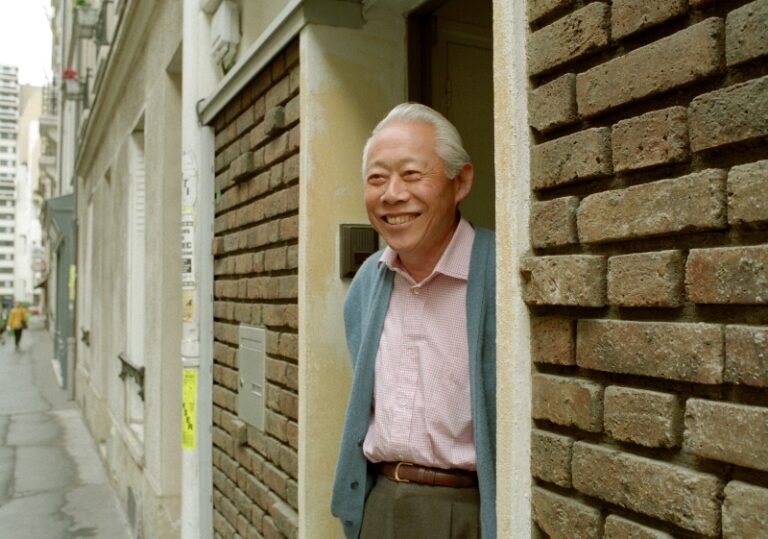
Zao Wou-Ki’s work stands at the crossroads of Eastern and Western expressive art. His training in China was mostly along Western academic lines and when he moved to Paris in 1948 his work became increasingly abstract. At that moment the links became clear between his contemplative spaces with their calligraphic brushstrokes and the lyrical painterly abstraction of the tachiste group and the abstract expressionists. His work grew in scale and stature to the point that the mature paintings are often spread across two or three large canvases,yet even on this epic scale Zao’s lyricism and the expressiveness of his brushstrokes are not compromised. His work seems always to have been freshly invented - every encounter with it is a new moment and a new experience.
Biography
The post-1945 era has witnessed a rich engagement between East and West in the central matter of abstract and near-abstract painting of an expressive,sometimes calligraphic sort. To this Zao Wou-Ki has made a major personal contribution that awaits proper analysis. Zao began his professional life in China. ‘Zao’ is the westernised version of his family name,Tsao,which links him to the Sung Dynasty. Works by two Chinese painters were consistently honoured in the Tsao household,by Chao Meng-Fu of the Yuan and by Mi Fei of the Sung period; the latter still holds a special place in Zao’s heart for his landscape painting and for calligraphy.
Zao Wou-Ki grew up near Shanghai and when he was 14 years old he entered the Hangchou Art School. His studies were mostly along western academic lines,and soon he was echoing French late nineteenth-century painting in his portraits and still lifes. His first exhibition,in 1941,by which time he was a junior teacher in the school,demonstrated his awareness of Cézanne,Matisse and early Picasso as well as of ancient Greece. A second solo exhibition followed in 1947,but he knew that he needed to go to Paris,a decision which his father supported. He arrived in Paris on 1 April 1948 with his wife and son,and set to learning French,seeing all the art he could while attending an atelier-school and also setting up his own studio. He was soon rewarded when,in 1950,Henri Michaux brought the dealer Pierre Loeb to Zao’s studio; Loeb bought a dozen paintings and offered him a contract. 1950 also saw the publication of Zao’s first lithographs,including a suite of eight accompanying poems by Michaux. In 1951,in Switzerland,Zao had his first encounter with the art of Paul Klee and he found its partly Oriental conception of great value.
Soon Zao was exhibiting regularly,in Paris and then also in America,Switzerland and London. The Chinese painters’ tendency for contemplative spaces and sharp marks accorded well with the lyrical aims of tachism and abstract expressionism. When Zao spent some time in New York,he was welcomed into the New York school and was particularly close to Kline,Guston and Brooks. Then he travelled with to other American art centres and on to Hawaii,Tokyo,Kyoto and Hong Kong,where he met his second wife,the sculptor May. After returning to Paris in 1959 he developed a warehouse into a large studio,garden and dwelling,and there he worked on the epic abstract canvases which established his fame. When he obtained French nationality in 1964 it was with the support of the writer and Minister of Culture André Malraux.
Among the large abstracts painted in his new studio was the 1964 homage to the composer Edgar Varèse. After May’s death in 1972,Zao’s Paris gallery presented an exhibition of her sculpture and his Chinese ink drawings. These events as well as his extensive travelling,including a visit to China,temporarily halted work on his large canvases,but a period of intense production and major exhibitions followed from the end of 1973. His range of activities increased further in 1980,when he undertook to make a large mural in watercolour for a new school. That November he had his first show at Pierre Matisse’s gallery in New York. His 1981 exhibition at the Grand Palais in Paris,his first in a French museum,toured to five Japanese museums and then went on to Hong Kong and Singapore. The exhibition returned from the Far East in 1983 for final showings in Montauban and in Châteauroux,the home town of his third wife,Françoise Marquet,who he had married in 1976. There were several occasions when Zao made work for new buildings,notably for those designed by his friend I M Pei In 1985 Zao went with Françoise back to Hangchou to teach in his old school for a month.
Zao’s exhibitions have proliferated,and honours have been showered on him,both national and institutional. In 1993 he was made both Commander of the Légion d’honneur and an honorary doctor of the Chinese University of Hong Kong. His work has continued to fuse Chinese characteristics,mainly those of traditional landscape painting,with a scale and an emphasis on expressive brushwork and colours that belong to the West. Done in ink,his abstracts look towards calligraphy; his oil paintings tend to stay close to landscapes in their horizontality and luminous horizons – sometimes catastrophic landscapes,as in Altdorfer,Turner or Clyfford Still. Polyptychs enable him to execute these on a truly large scale. What is remarkable,in an age devoted to large-scale art,is how Zao retains his lyricism over such large surfaces. His paintings never seem laboured but freshly invented,newborn at every encounter.
Norbert Lynton
Chronology
-
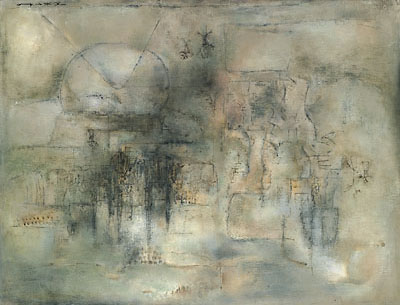
La Cathèdrale et ses environs
-
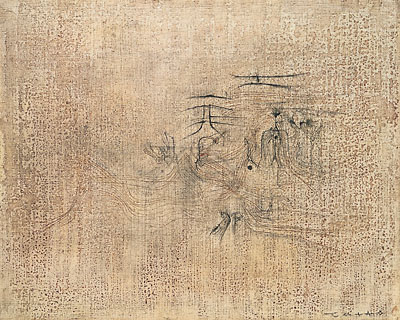
Petit jardin abandonnè
-
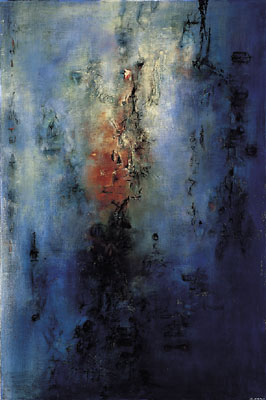
Hommage à Chu-Yun
-
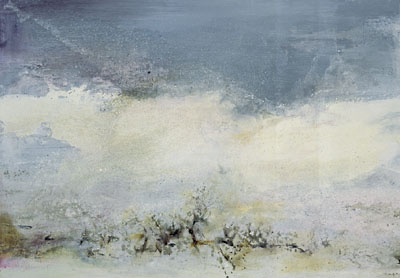
Peinture, 10 janvier 1998
-
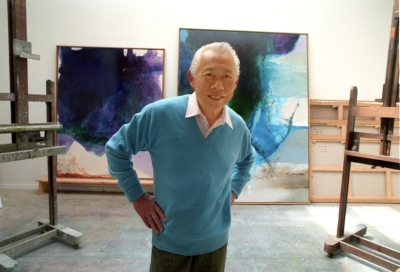
At his studio
-
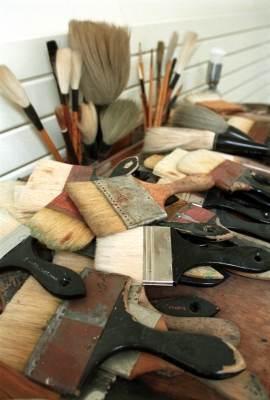
©The Sankei Shimbun
